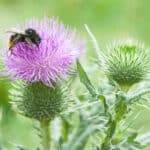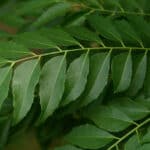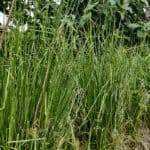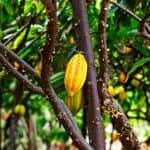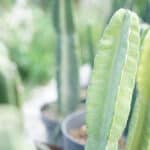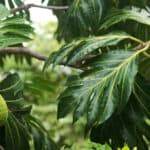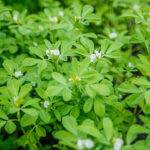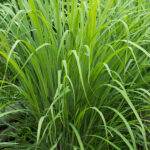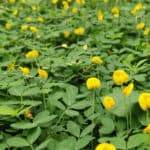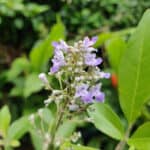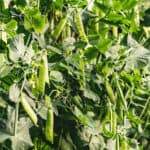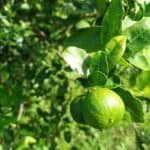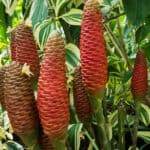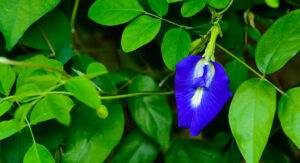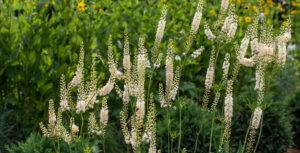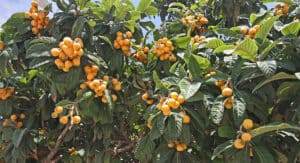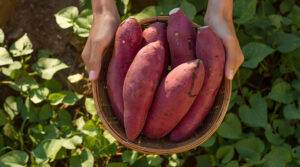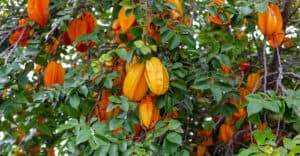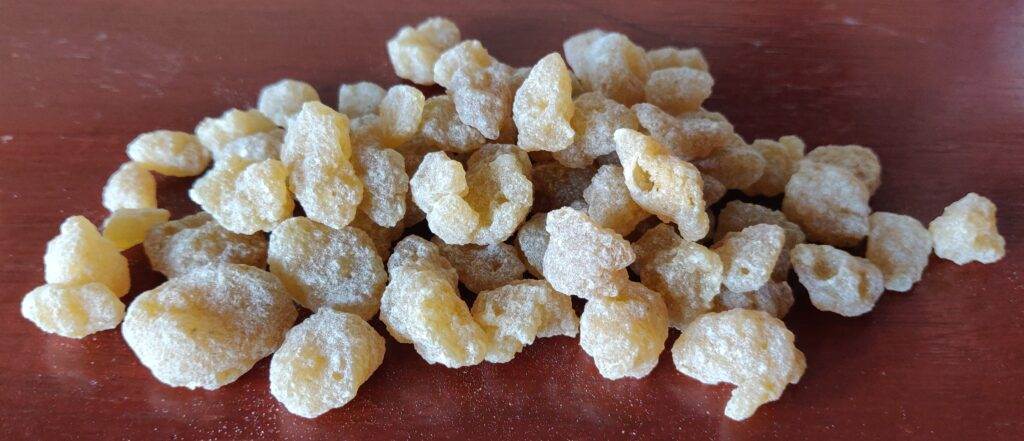
Boswellia serrata is gaining attention rapidly, especially as a health supplement, powder or tea.
However, did you know that this gem has been a consistent preference as medicine and incense throughout local and global communities for ages before this stardom, and for all the right reasons?
In India, it is commonly known as Salai Guggul, Loban or kundur in the Northern zone and Indian Olibanum in English, some other common local names are Luban or Salai in Bengali, Gugal, Saleda or Dhup in Gujarati, Madi, Saler, Salga, Salhe or Sali in Hindi.
Sallaki or Kundur in Sanskrit and Kungli, Morada, Parangisambrani or Kundrikam in Tamil.
The plant extracts are known for acting as an immune moderator and thus are considered a safer alternative to immunosuppressants by acting as disease-modifying agents.
The resin contains Boswelic acids, safer alternatives to steroids to treat inflammatory diseases without gastric discomfort.
The resin is also used as a fumigant timber to make packing cases, toys, matches, and pulp; planted in reforesting degraded lands.
The sticky sap from the tree is called Indian frankincense, and burning a little of it over some charcoal from the firewood stove and some camphor has always been a daily ritual for many.
It is believed to cleanse the surroundings, especially the house’s interiors due to its characteristic balsamic resinous smell and healing properties.
It’s an essential element for various important cultural or religious rituals in India ;however, one can simply smoke this religiously burning incense if you enjoy slightly spicy and herby incense like I do.
Plant Description
The name Boswellia serrata comes from the genus in honor of Scottish botanist – John Boswell.
They belong to the Burseraceae family and are found in the mountainous regions of India, Northern Africa, and the Middle East.
The genus Boswellia is spread and dispersed widely across Arabia, the Northeastern coast of Africa, and India.
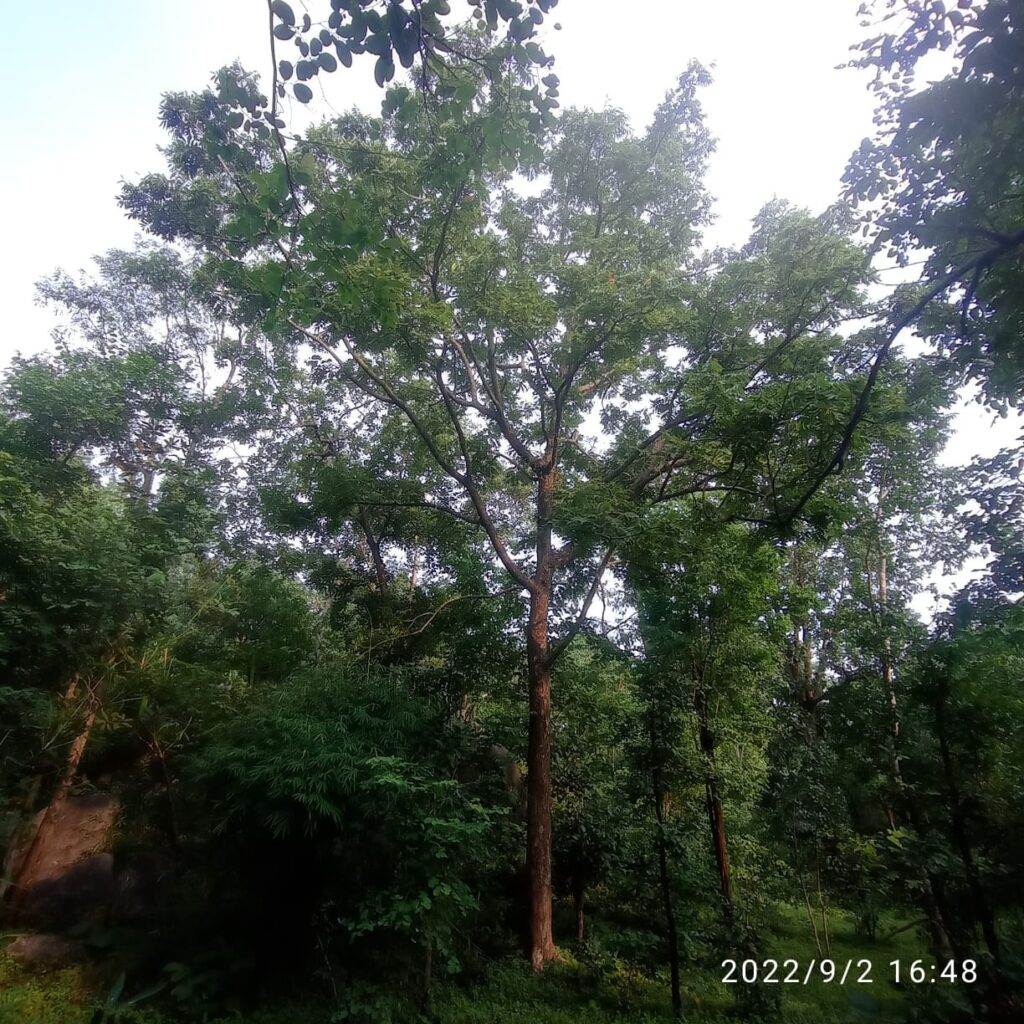
In India, the tree is abundant in Rajasthan, Western Himalayas, Madhya Pradesh, Maharashtra, Gujarat and Andhra Pradesh.
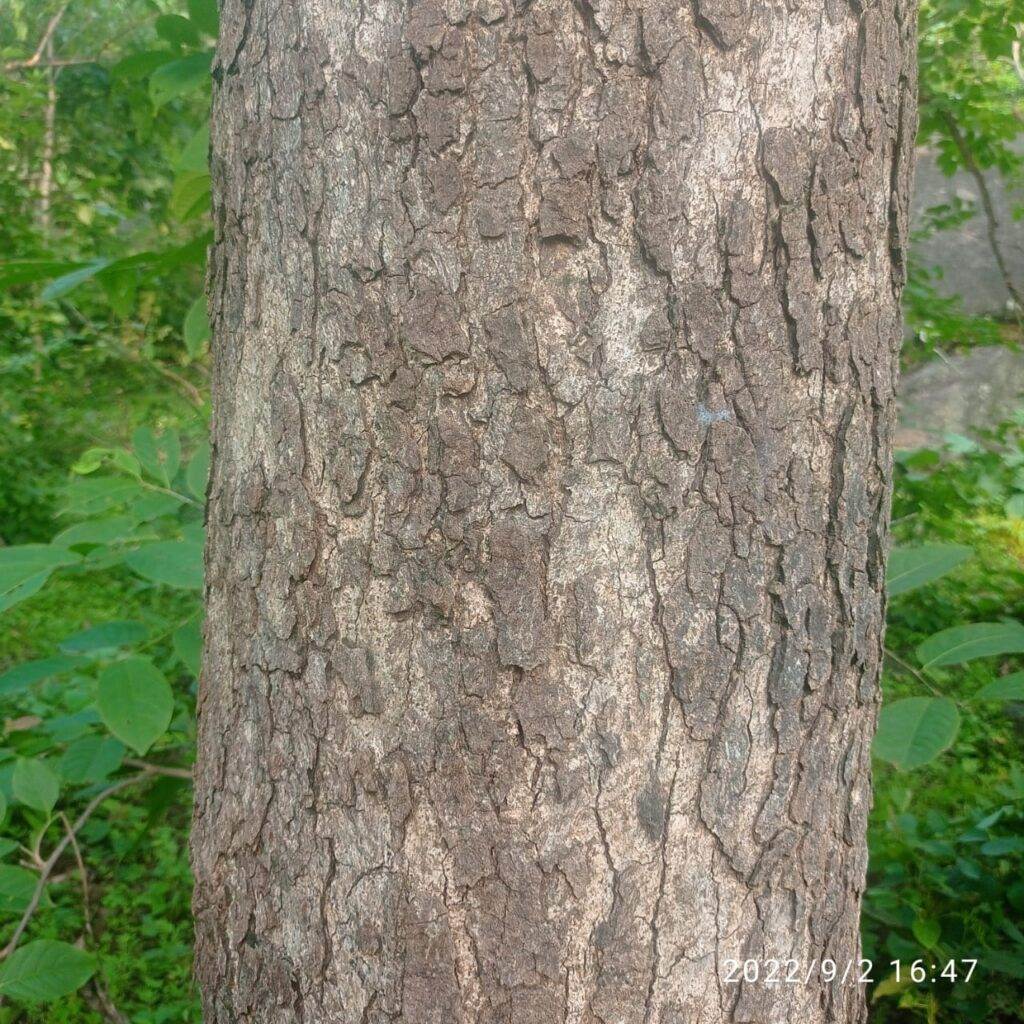
It is a moderate-sized to large tree gaining a height of 15 to 20 meters and 2.5 to 3 meter grith, found mostly in the tropical deciduous zones.
It has a light-spreading crown and drooping branches
The girth is 1.2 to 1.8 meters and the bark is thin, greyish-green, ashy, or slightly reddish.
The bark has a chlorophyll layer beneath the outer layer, peeling off in thin paper-like flakes.
The leaves are lanceolate, alternate, exstipulate, imparipinnate, 20 to 45 cm long, crowded towards the ends of the branches.
The leaflets are 15 to 30 cm long.

Flowers are bisexual, small, white, in auxiliary racemes, 10-20 cm long and crowded towards the ends of branches. There are 5 to 7 petals, ovate, 5-7 erect, free and around 0.5 cm long.
Sometimes they appear before the fall of old leaves or after the appearance of new ones.
The fruits are heart-shaped, winged around 1 to 1.5 cm long, and three-cornered with one seeded pyrene.
In India, the white flowers appear in stout racemes at the ends of branches from the end of January to April.
The drupes ripen in May-June.
The leaves turn yellowish to light brown before they nearly all fall in December; the new leaves appear in May or June.
Plant Properties
The resin from the plant has various bioactive compounds ( Boswellic acids, Monoterpenes (α-thujene); diterpenes, triterpenes, tetracyclic triterpenic acids (tirucall-8,24-dien-21-oic acids) however the boswellic acids are the most celebrated ones, for all of the right reasons.
It has been used primarily for treating arthritis and as an antiseptic and anti-inflammatory agent in folk medicine.
It has been followed by other diverse purposes such as osteoarthritis, fibrositis, wound healing (internal and external), joint health, cholesterol management, asthma and other respiratory functioning, wound healing, digestive health, oral care and more for centuries.
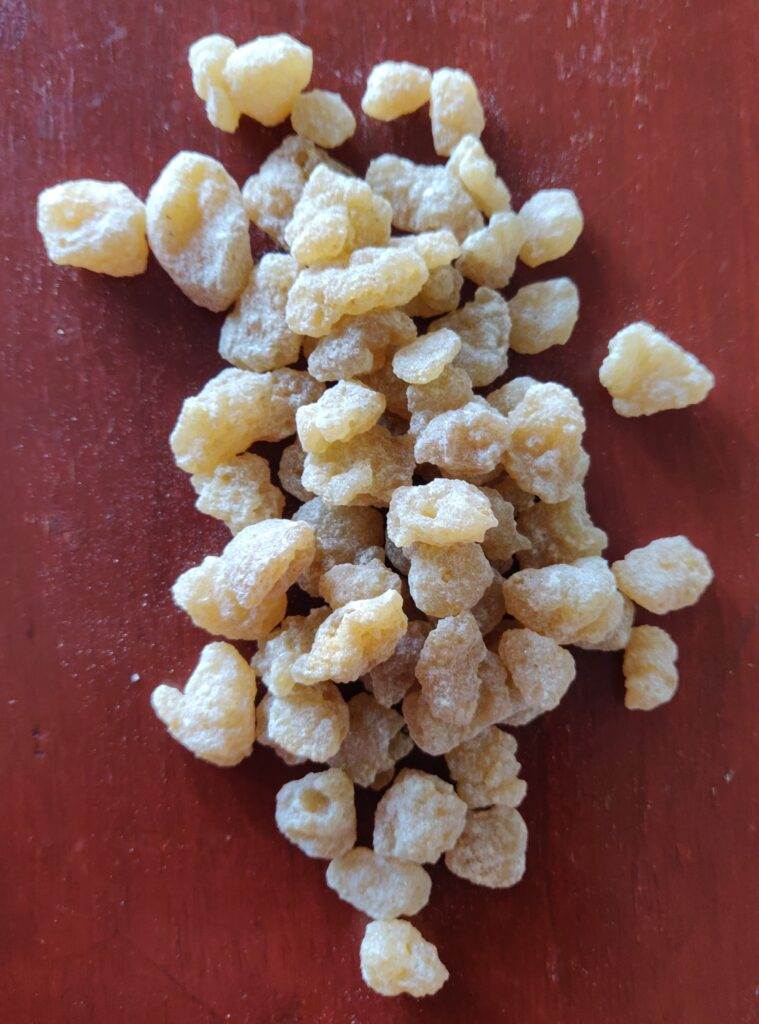
The gum resin is reddish brown, greenish yellow, or dull yellow to orange.
It forms small, ovoid, fragrant tears.
Indian Folk Medicine and Ayurveda often combine Boswellia serrata resin with other plants and herbs as per the need for specific health concerns.
Boswellic acids – Pharmacological Activities
They are one of the primary active compounds found in the plant’s resins, high in anti-inflammatory effects they are used for inhibiting certain enzymes involved in inflammation along with expectorant, antiseptic, anxiolytic, anti-neurotic, analgesic, tranquilizing, and antibacterial effects.
It is known for modulating diverse targets such as enzymes, growth factors, kinases, and transcription factors, as well as receptors, which allow it to stimulate apoptosis, cell cycle arrest, etc.
It can also inhibit different signaling pathways related to cell survival, proliferation, and metastasis, read more here.
Incensole acetate
Incensole acetate is what gives the resin its signature pleasant fragrance.
It has been studied for its potential effects on the nervous system, including mood-enhancing and anti-anxiety properties.
Phenolic compounds
The phenolic compounds in the resin are known for their antioxidant properties, helping neutralize free radicals in the body.
These components work synergistically to provide the resin with its anti-inflammatory, analgesic, and potential therapeutic effects, making Boswellia serrata resin a subject of interest in traditional medicine and scientific research.
Consumption Concerns
It is important to consume the extracts in small proportions and always check for your body type and existing ailments.
It may cause gastric irritation in people with sensitive stomachs.
If any other side effects are felt, always seek medical guidance, especially for its use during pregnancy.
Regenerative Properties
The tree is highly recommended and preferred for afforestation on poorer soils in areas with a mean annual rainfall of 500 – 1250 mm, diverse soil ranges, and degraded soils.
It’s considered suitable for restoring dry sandstone hills denuded of vegetation, where the soil is markedly ferruginous and where complete protection against biotic factors is not always feasible or affordable.
Other factors making it suitable are its ability to withstand the adverse effects of forest fires, its immunity to being browsed or lopped for fodder, its ability to resist the effects of insolation and drought, and its capacity for reproduction by seed, coppice, and root suckers are great assets.
It also looks beautiful as an ornamental plant and is popular for avenue planting in India.
Boswellia serrata Growing Guide
Climate & Temperature
It can be seen growing up to 150 meters altitude in zones with mean annual temperatures ranging between 12 to 21°C, annual highs of 25 to 35°C and a mean annual rainfall of 500 to 2000mm with ideal rainfall ranging between 750 to 1500mm with a dry season of 6 to 9 months.
It thrives in 40 to 90% humidity however can be found in less.
It can be found in rocky hills’ dry and hot exposures, with low rainfall ranging between 100 to 150 cm as well.
Soil
It needs well-draining soils and can be seen naturally growing on the rocky ridges and hotter hilly slopes.
It thrives in neutral soils above gneiss, schist, mica-schist, granite, shale, quartzite, ferruginous, limestone and sandstone however can be seen tolerating slightly acidic to alkaline soils too.
Interesting Observation: The species can thrive in the poorest and the shallowest soils where most of its associates remain stunted.
They can be grown in red, laterite, or rocky soils of dry deciduous forests and on dry sandstone ridges.
It is also grown on drier ridges of metamorphic rocks and easily planted in shelter belts, windbreaks and hedges.
Sun
It is a strong light demander, thus thrives in full sun.
Water
Recommended to irrigate sparingly during the growing season, only enough to prevent the plant from drying out.
Preferably once a week is enough to keep the plant healthy in most cases.
Avoid irrigating during the dormant season in winter unless the plant is drying out completely.
Pest & Disease
White spongy sap rot is known to attack trees in avenues and forests.
The tree is also subject to attack by other fungi that cause spongy heart rot, mottled sap rot, spongy root and butt rot, and white fibrous rot.
Most of the issues relating to rot root or fungal infections are cured by monitoring the moisture in soil and avoiding overwatering.
The bark of the felled log has the lialbility to insect attack and thus needs to be protected.
Under ideal environmental conditions, in the initial period, the bark maintains its green and healthy condition for several months.
However, if decay sets in, the larvae of the beetle Atractocerus reversus are known to bore the wood.
The alternative is to debark the logs and free them from attack by Atractocerus, but the peeled logs are freely attacked by Platypus and Xyleborus spp.
Companion planting with understory-level thorny bushes and strongly scented herbs can help manage these issues.
Propagation
From Seeds
The ripe seeds can be collected from the tree between May and June here in India, one has to keep an eye out for mature fruits falling from the tree post-flowering in other regions.
Seed selection Tip: Select seeds that sink in water and discard the floating ones as seed sterility is a major problem post-fertilization.
The seeds can be sowed directly into the soil at a desired permanent spot.
The seedlings can be raised in baskets or grow bags as well however due to the delicate root structure in the initial stage, sowing directly in soil or raised nursery beds is recommended.
It takes around a week to two for germination.
One can start transplanting after 8 to 10 weeks.
Site Preparation
It is recommended to dig a 1.5 to 2 feet deep pit, similar in radius and similar in radius, for transplantation.
Compost can be mixed with the soil for a better head start.
Be extremely careful with the roots when transplanting, slightly lose the rootball to help the roots face outside.
Seedlings do not withstand prolonged summer., shading is necessary when planted in open spaces.
Propagating From Cuttings
It is grown from large cuttings of stem or branches, ranging from 7.5 to 21-25 cm girth at the thicker end and 90 to 120 cm long. They are buried at 45 to 60 cm.
Selection Tip: Thick branches from which good oleo resin comes should be selected for plantation.
The thicker end should be given a slant cut for food cambial layer exposure.
The thin end should be coated with white oil paint for better results.
The cuttings usually show around 76% sprouting rate.
Site Preparation
Planting should be done 2 months before rains (Apr-May, when there is no rain) in 45-60 cm pits.
Ensure the soil is well pressed all around the cuttings.
Watering and shading is not necessary.
Observation: The pant grows and propagates slowly in cooler weather and when grown outdoors, the seedling can withstand temperatures down to 5°C.
Invasive Concerns
Even though it does not suggest that the species can be planted in every ecological zone within that country, nor that the species can not be planted in other countries than those depicted.
However, following biosafety procedures that apply to your planting site is always recommended.
Harvesting & Storage
The dry seeds from mature fruits are harvested by hand or fallen ones are collected and stored in dry jars or tins.
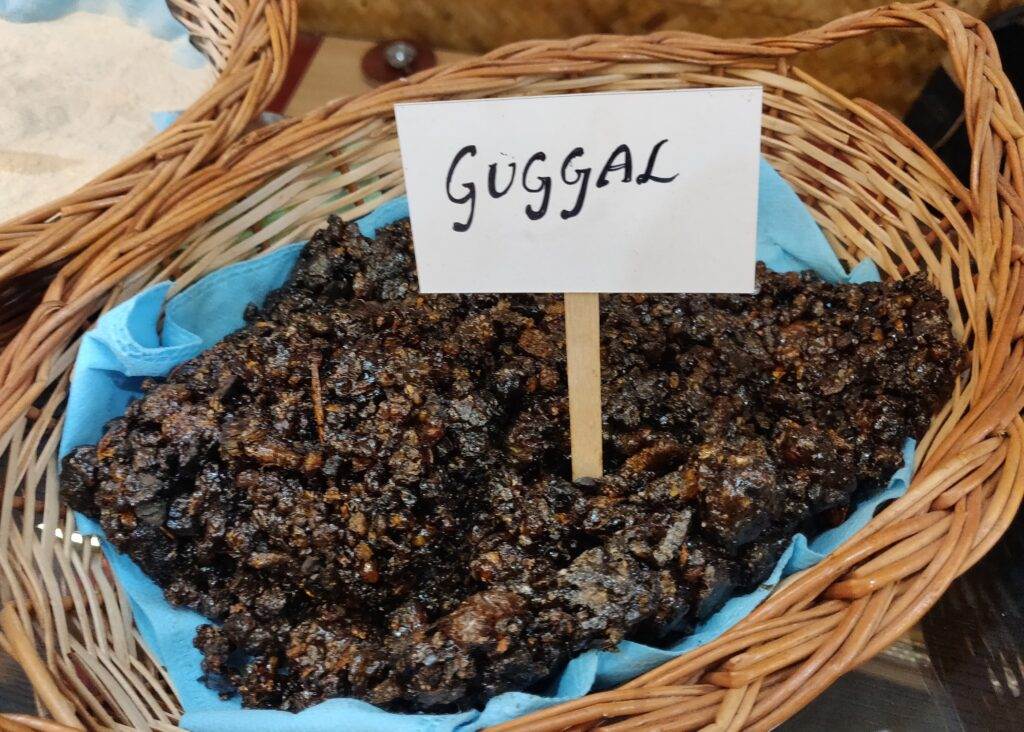
Gum or Resin
A mature tree yields about 1 to 1.5 kilograms of gum annually.
The gum is harvested by making small incisions on the trunk, mostly from November to July.
A basket is tied near the incision as the oleo gum resin oozes out.
It is collected and stored in a bamboo basket for 1 month, this allows the liquid content to flow out thus retaining the semisolid aromatic gum resin.
It then turns hard and slightly brittle, the bigger chunks are broken into smaller pieces and impurities if any are removed manually.
It is used locally or sold in the market, it is graded based on color, shape, size and flavor.
Further to wich is processed as per the function.
Fodder
Even though cattle do not readily browse it, it is considered a substitute fodder for buffaloes in India.
Fuel
The wood is traditionally used for cooking or as charcoal as it has a favored iron smell.
wood is a good fuel.
Fibre
The tree is also used as a raw material for pulp paper and newsprint.
It is usually mixed with bamboo pulp for the finish for strength and durability.
The bark is used for making ropes, strings and other cordage items.
Timber
The timber is used for ammunition plywood, boxes, mica boxes, packing cases, well construction, matches, plywood and veneers.
Interesting Fact: West Bengal has recorded the tree as a new lac host.
Guide to Using Incense
Traditionally, the resin is mixed with more ingredients to make global or incense however it is used directly as well.
Today it is available both loose and packaged, offline as well as online.
If you are an incense admirer, here are 2 of the easiest ways of incorporating it.
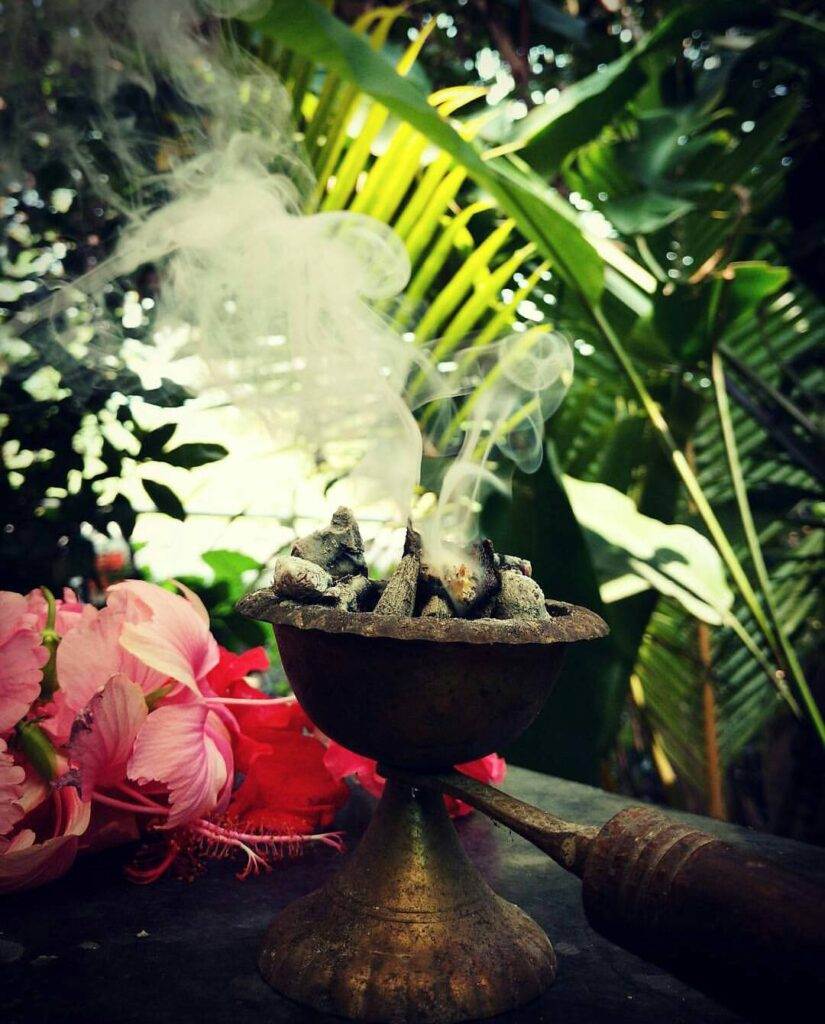
For using it directly, I break the resin into smaller particles or use tiny pieces.
Traditionally, a few pieces of charcoal are pulled from the firewood chulha (stove), placed in a dedicated incense or smoking bowl and the coarsely crushed powder is sprinkled on top of it, which makes it smoke.
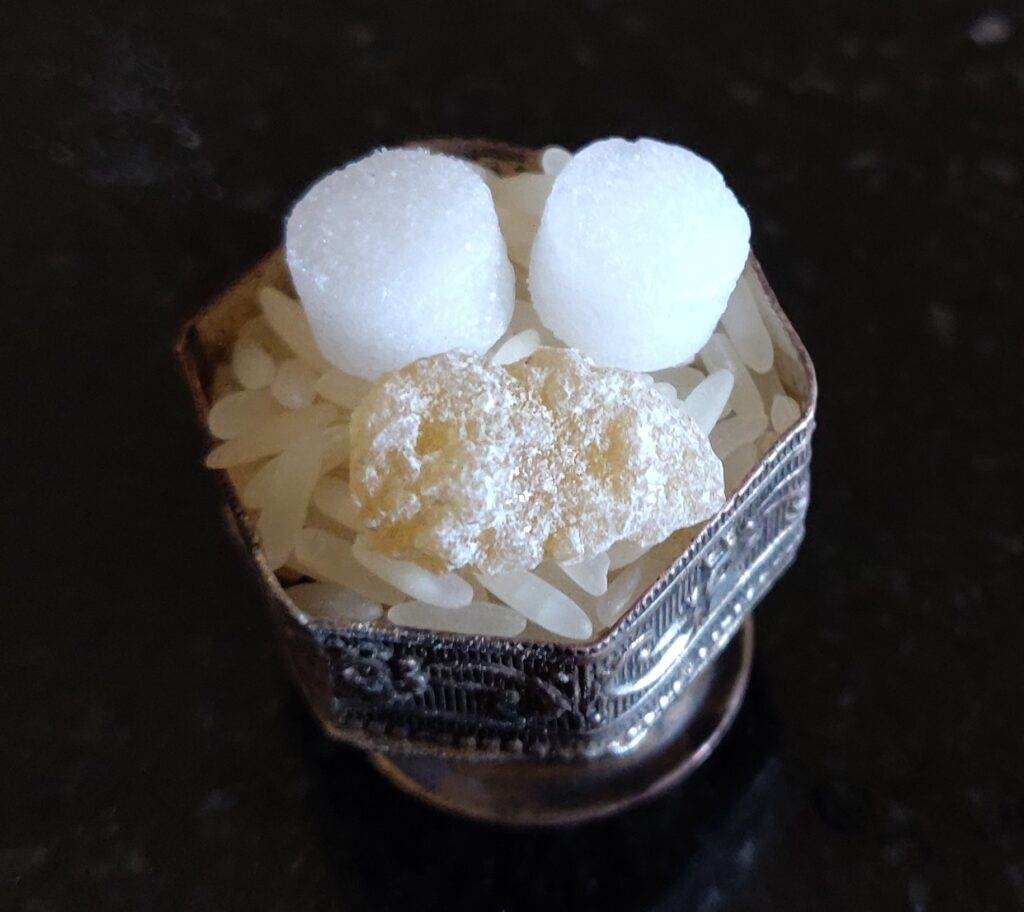
Another way of using it is to burn it with some camphor, Some rice grains are placed in the container at the bottom, this helps prevent the container from heat damage and forming layers of sticky residues.
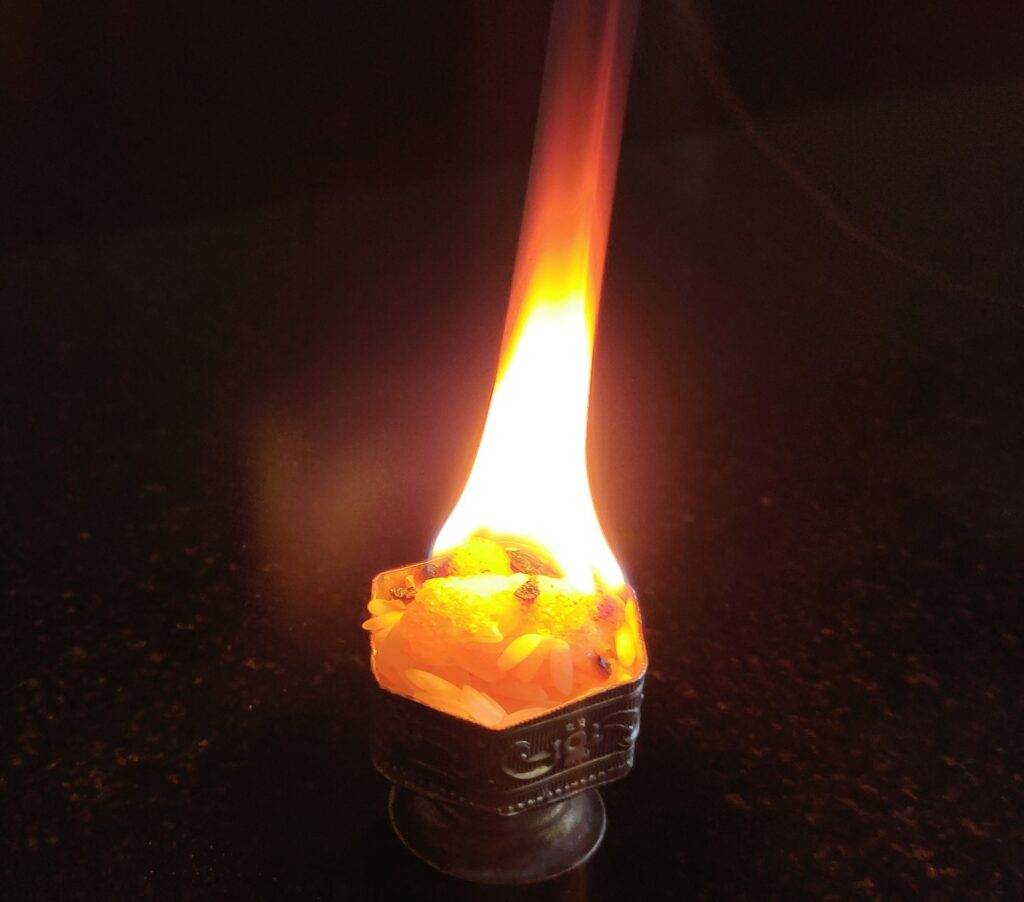
This is usually done in the evening as camphor also acts as a mosquito repellent, one element, and has multiple functions!
Conclusion
Overall, the plant is steeped in indigenous wisdom and thrives as more than a botanical treasure, offering potent medicinal value today as research continues to explore and validate the traditional uses of the tree.
It holds great potential in helping us regenerate ticky degraded landscapes and simultaneously obtain yields beneficial, economic and medicinally for humankind 🙂
References & Credit
I would like to thank Soumik Baneerji for his valuable input on the plantation, growth and care, and medicinal benefits insights for this article followed by the references mentioned below.
Boswellia_serrata.PDF (worldagroforestry.org)
An Update on Pharmacological Potential of Boswellic Acids against Chronic Diseases – PMC (nih.gov)
Boswellia Serrata, A Potential Antiinflammatory Agent: An Overview – PMC (nih.gov)




